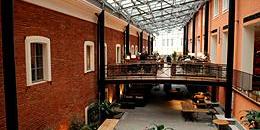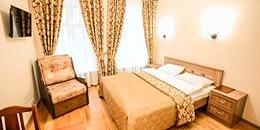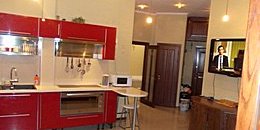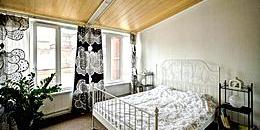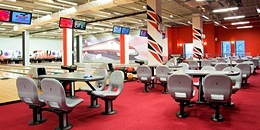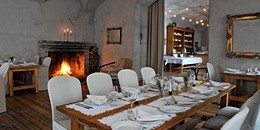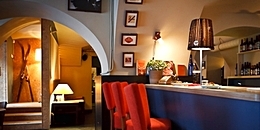Naberezhnaya Makarova (Makarov Embankment)
Makarov Embankment is one of the central embankments of St. Petersburg, passing along the northern shore of Vasilevsky Island along one of the branches of the delta of the Neva River, the so-called Malaya (Little) Neva. The Embankment is named after the famous Russian Admiral Stepan Makarov. Its various eclectic buildings of the 19th and 20th centuries are a combination of neoclassical, Art Nouveau, Russian Neoclassical, revivalism and even Stalinist style. In addition to examining the buildings and magnificent views of the Neva, you can also visit several interesting museums before walking to the Spit of Vasilievsky Island.
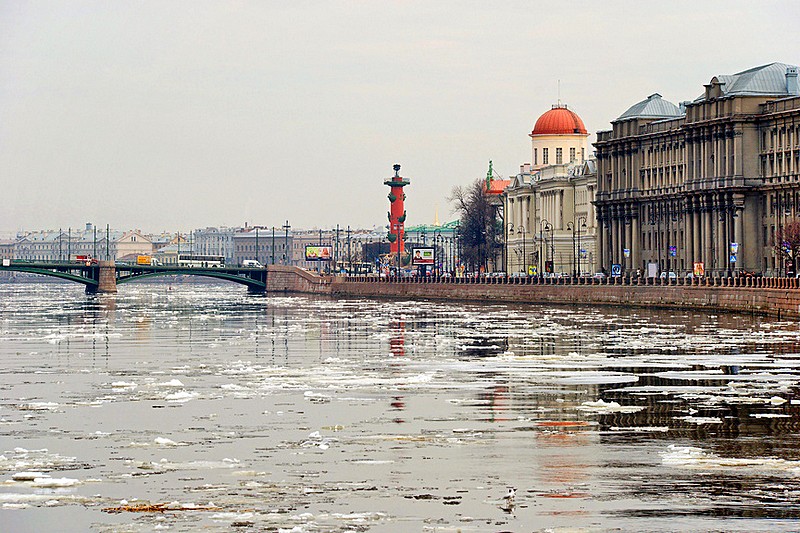
The history of the Makarova Embankment is divided into three stages. In the early 18th century Vasilevsky Island was intended to be the center of St. Petersburg, so portions of the surrounding streets were occupied by the richest and most noble families of the country. The largest noble houses were found here and the first architect of Petersburg, Domenico Trezzini, built a Gostiny Dvor (indoor market) with a two-story archway. Unfortunately, this structure was demolished in the 1900's.
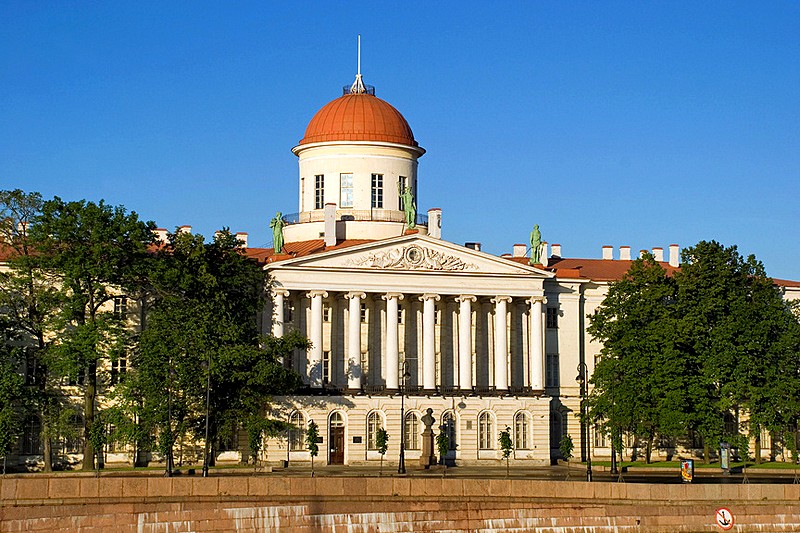
In the first half of the 19th century, a commercial port was developed on the Spit of Vasilievsky Island. By this time older buildings were being demolished while construction started on the St. Petersburg Stock Exchange and Customs House to designs by Thomas de Thomon, which stands out for its high eight-column portico, surmounted by a sculpture of the god of trade Mercury. Across from the Customs House was a beautiful marina decorated with sculptures of lions. The embankment was encased in granite up to the Tuchkov Bridge. More commercial marinas popped up, and the embankment itself was renamed Tuchkovaya.
In the early-20th century the massive neoclassical buildings of the Chief Administration of Extraordinary Tariffs (No. 6) and the Ministry of Trade and Industry (No. 8) were constructed. However, by this time, the Spit of Vasilevsky Island was losing its importance as the major seaport of St. Petersburg. Apartment houses for the rich began to appear: the Eliseev House, the Stenbok-Fermor House, and the Petrov House.
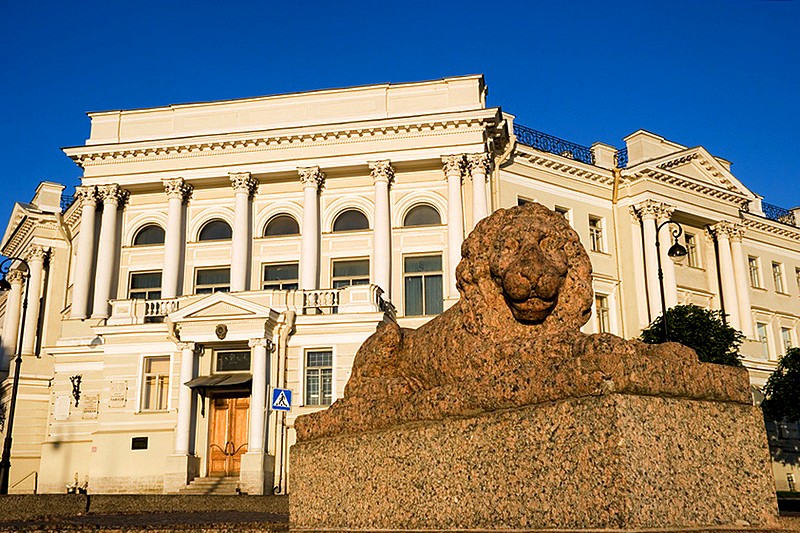
After the Revolution, Soviet institutions occupied the former financial buildings. The Chief Administration of Extraordinary Tariffs building was occupied by the Institute of Physiology, where outstanding scientists such Ivan Pavlov, Leon Orbeli and others worked. The Northern Warehouse was replaced by the Institute of Geology and Geochronology, the Dokuchaev Institute of Silicate Chemistry and the Central Museum of Soil Science. The Customs House was occupied by the Institute of Russian Literature (Pushkin House) which was led by Anatoly Lunacharsky and Maxim Gorky. Today you can visit the Museum of Literature, which exhibits materials related to the life and work of Alexander Pushkin, Mikhail Lermontov, Ivan Turgenev, Leo Tolstoy, and Vladimir Mayakovsky.
In the 1930s several buildings in the Stalinist neoclassical style were constructed on the embankment including the Kozitsky Radio Factory, which was known for its huge colorful murals and paintings on the ceiling. In 2003-2008 the building was demolished and rebuilt as a hotel similar to the Petrov home, which is quite rare in urban planning practice, even in St. Petersburg.
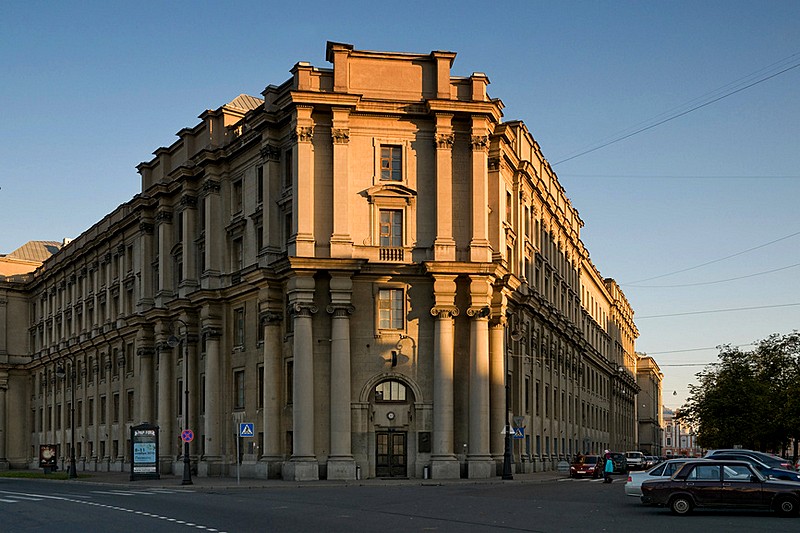
From 1958-1966 the embankment itself underwent massive reconstruction. It also received its current name during that time in memory of the outstanding Russian naval commander Admiral Stepan Makarov. At various times, residents of the apartments along the embankment included Pyotr Tchaikovsky; artist Ivan Shishkin; sculptor Pyotr Klodt; radio pioneer Alexander Popov; and the married poets Nikolay Gumilev and Anna Akhmatova. Today Makarov Embankment is the perfect place to stroll along the Malaya (Little) Neva, with its rich history and magnificent views.
| Metro stations: | Sportivnaya, Vasileostrovskaya |
|---|---|
| Directions: | From Sportivnaya, turn left out of the station and cross Tuchkov Bridge onto Naberezhnaya Makarova. From Vasileostrovskaya, turn right out of the station and walk to the end of Sredny Prospekt and the interchange with the embankment. |
| Best walking route: | All the embankment (about 1 hour) |
| What's here? | North Warehouse of the Stock Exchange / Central Museum of Soil Science named after V.V. Dokuchaev, Chief Administration of Extraordinary Tariffs, Ministry of Trade and Industry, Customs House / Institute of Russian Literature (Pushkin House) / Literary Museum, Eliseev House, Stenbok-Fermor House, Petrov House, Kozitsky Radio Factory |
| What's nearby? | The Exchange, Exchange Square / Spit of Vasilievsky Island, Tuchkov Bridge, Birzhevoy Bridge, Malaya Neva, Neva River, Sredny Prospekt, Maly Prospekt (Vasilievsky Island), Kadetskaya and 1-ya Liniya, Naberezhnaya Smolenki Reki (Smolenka River Embankment) |


